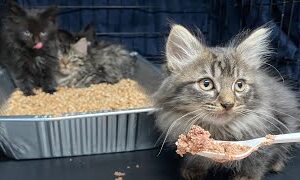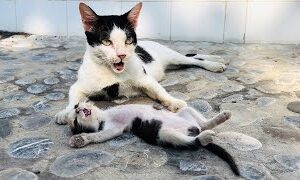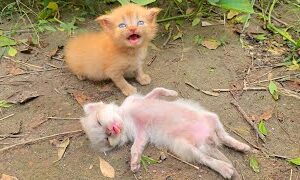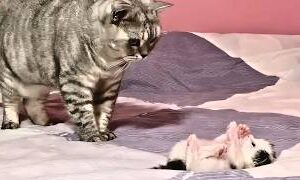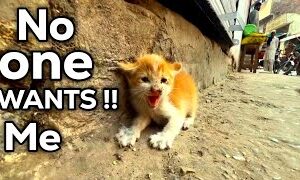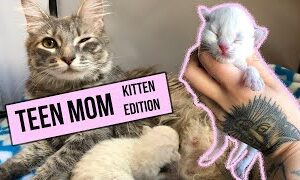In the heart of a bustling metropolis, nestled amidst towering skyscrapers and the ceaseless hum of urban life, there lived a rather peculiar feline named Whiskers. Whiskers was no ordinary cat. He was a ginger tabby with a penchant for the peculiar and a habit of sticking his tongue out in the most unexpected of moments.
Whiskers’s tongue-wagging antics had become a source of fascination and amusement for his human companions. They would often find him lounging on the windowsill, his tongue lolling out as if he were lost in deep thought. Or perhaps he was simply enjoying the warmth of the sunbeams that bathed his fur.
At first, Whiskers’s owners were concerned about his odd behavior. They took him to the veterinarian, who, after a thorough examination, assured them that there was nothing physically wrong with their feline friend. Whiskers’s tongue-wagging was simply a quirk, a unique characteristic that set him apart from other cats.
As Whiskers grew older, his tongue-wagging became even more pronounced. It was as if he had mastered the art of tongue contortion, performing a variety of tricks that would leave any cat lover amazed. He could curl his tongue into a perfect loop, extend it to an astonishing length, and even flick it at unsuspecting flies.
Whiskers’s tongue-wagging became a source of joy and laughter for his family and friends. They would often gather around him, marveling at his extraordinary ability. Some even believed that Whiskers’s tongue was a sign of good luck, a symbol of his playful and carefree nature.
One day, a renowned cat behaviorist heard about Whiskers’s unique talent. Intrigued by the feline phenomenon, she decided to study Whiskers’s behavior in depth. She spent countless hours observing Whiskers, analyzing his every move, and trying to understand the underlying reasons for his tongue-wagging.
After months of research, the behaviorist concluded that Whiskers’s tongue-wagging was not simply a quirk, but a complex behavior with multiple functions. She hypothesized that Whiskers’s tongue-wagging served as a form of communication, a way for him to express his emotions and intentions.
For example, when Whiskers was happy and content, he would often extend his tongue in a slow and deliberate manner. This was his way of saying, “I’m feeling good.” Conversely, when he was feeling anxious or stressed, he would quickly flick his tongue in and out, a sign of his discomfort.
The behaviorist’s findings were groundbreaking. They shed new light on the complex world of feline behavior and challenged the long-held belief that cats are aloof and emotionless creatures. Whiskers, with his extraordinary tongue-wagging, had become a symbol of feline expressiveness and individuality.
Whiskers’s story continues to inspire and delight. He is a reminder that even the most ordinary of creatures can possess extraordinary talents. His tongue-wagging, once a source of curiosity and amusement, has become a testament to the diversity and complexity of the animal kingdom. And so, Whiskers, the cat with the tongue out, lives on, a beloved member of his family and a symbol of feline wonder.

